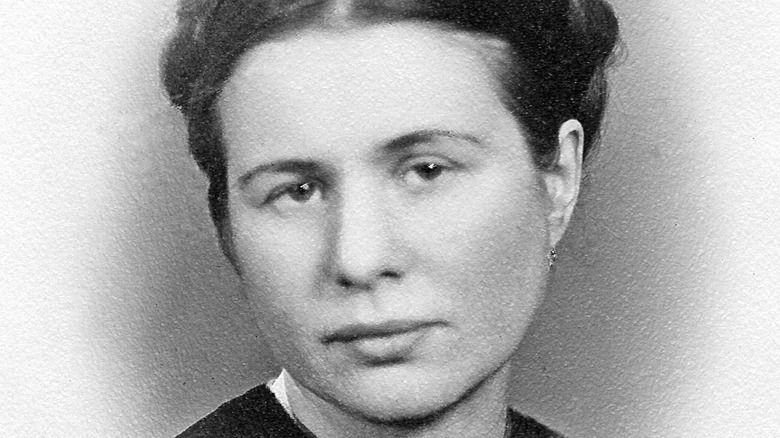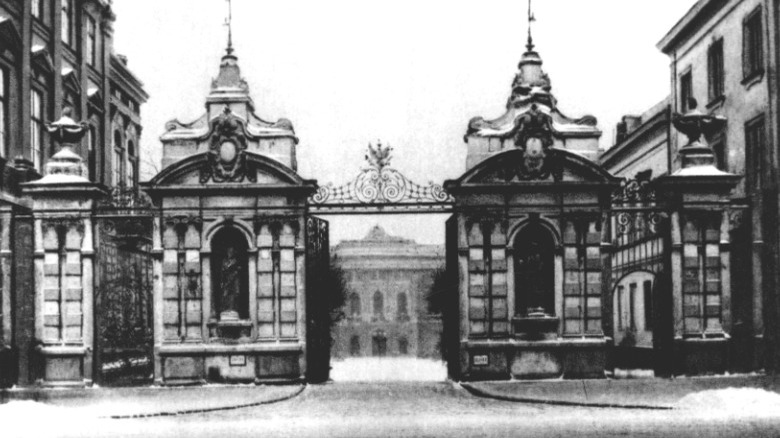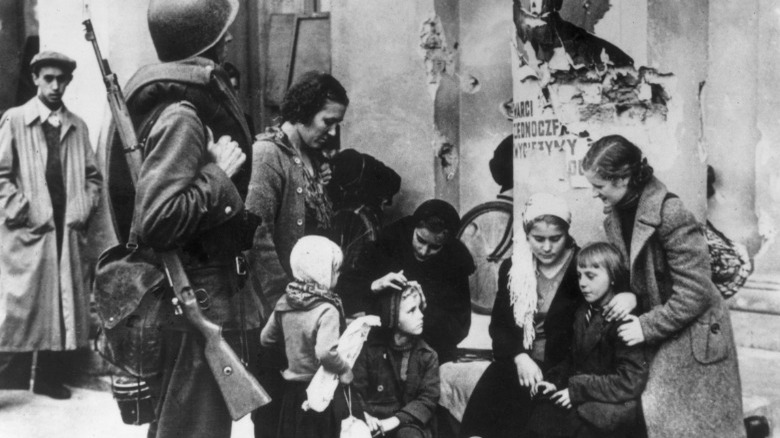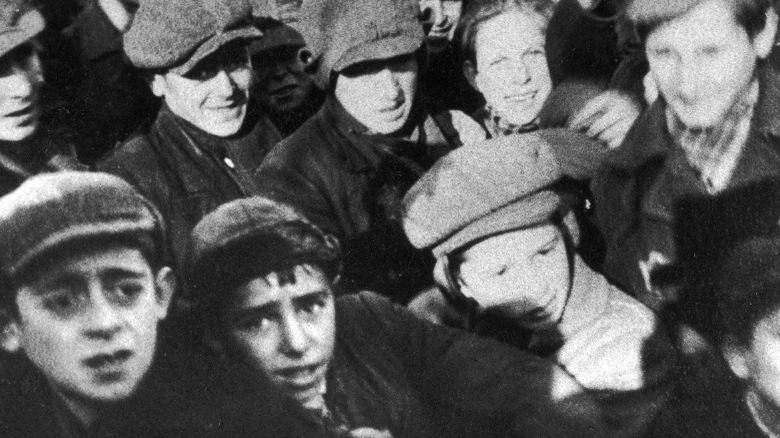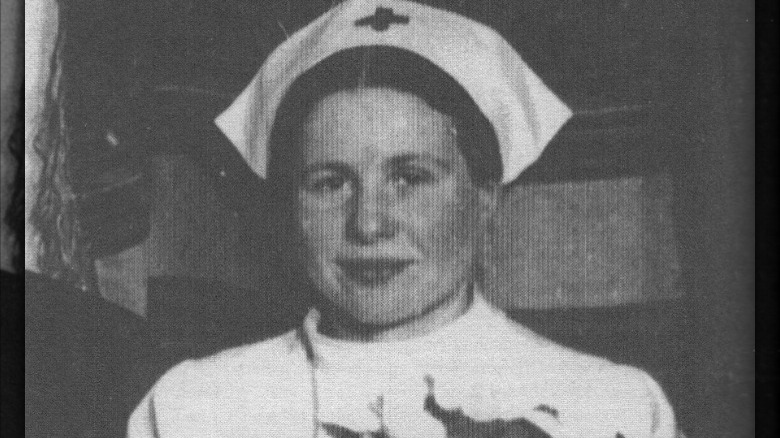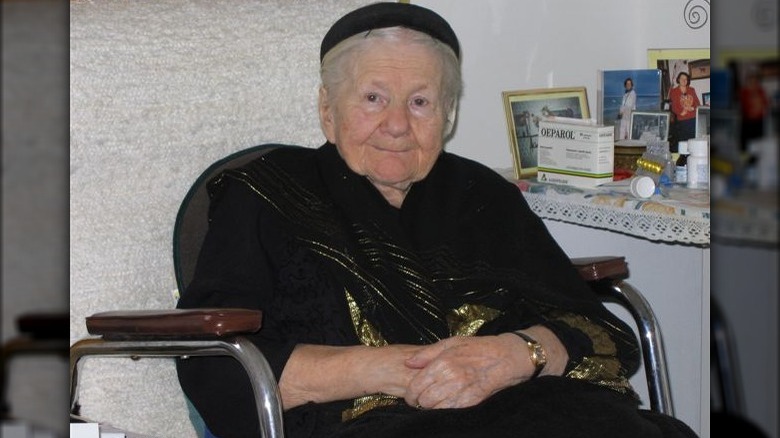The World War II Nurse Who Liberated Jewish Children With Coffins
During times of war, atrocities of all sorts are often committed. One of the most horrific war crimes to have ever been committed was the Holocaust. According to the United States Holocaust Memorial Museum (USHMM), the Holocaust was a "systematic, bureaucratic, state-sponsored persecution and murder of 6 million Jewish men, women, and children by the Nazi regime." Additionally, there were other groups that were targeted by the Nazis, which included those with disabilities, those of Slavic origin, the Roma, gay men, and Jehovah's Witnesses.
It is hard to imagine that such an abhorrent event could have potentially been worse if not for the actions of those who opposed the Nazi ideology. There are many stories of people who helped those persecuted, including Carl Lutz, Johan van Hulst, and Corrie ten Boom. Another of those who risked their lives to save Holocaust victims was a nurse named Irena Sendler, who saved the lives of 2,500 Jewish children.
Sendler's Early Life and Family
Irena Sendler was born Irena Kryzyzanowski in Warsaw, Poland on February 15, 1910 (per Holocaust Matters). Her parents were Janina and Dr. Stanislaw Kryzyzanowski. Though she was born in Warsaw, she grew up in a small town called Otwock outside the capital city. Sendler lost her father in 1917 when he died suddenly after contracting typhus from treating patients. Though she was only seven when her father passed away, the values he instilled in her would guide her actions throughout her life.
Following her father's passing, the Jewish community stepped up and contributed to Sendler's pursuit of her education. She would go on to attend Warsaw University and study Polish Literature. Her time at school was rather short-lived, as she would be put on a three-year suspension. Her crime? Vandalizing her grade card in protest of the ghetto bench system that was put in place to discriminate against Jewish students. This act of defiance would just be the beginning of Sendler's actions to fight the injustices later inflicted upon the Jewish population.
The Nazis Come to Warsaw
According to History, Germany invaded Poland in September 1939. Once the Nazis captured the capital city of Warsaw, the Jewish population of 400,000 was quickly isolated in a ghetto that measured barely over 1 square mile. Less than a year later, this area was completely walled off with brick and barbed wire. The ghetto was also patrolled by armed guards who would shoot anyone who attempted to leave the designated area without permission. Food and other supplies were limited, and History notes that thousands of people died each month due to sickness and lack of food.
At the time the Warsaw Ghetto was established, Sendler was cut off from providing aid to the Jews whom she had been helping. However, that didn't stop her, and she used her job as a social worker to find another way to help those who were trapped. Due to papers she had from the Contagious Disease department, she was allowed to enter the Warsaw Ghetto, which provided the access she needed. Sendler then was able to provide more than 3,000 false documents that helped Jewish families inside the ghetto's walls (per Life In A Jar).
Sendler Joins Zegota
The work that Irena Sendler was doing was not only extremely important, but it was also terribly dangerous. Despite the possible consequences that she faced, Sendler continued her mission. According to Yad Vashem (Israel's official memorial for the victims of the Holocaust), Sendler was appointed director of Zegota, an organization devoted to helping Warsaw's Jewish population. This secret organization was responsible for running an underground operation with the purpose of helping Jews escape the Holocaust. She went by the name "Jolanta" to protect her identity and began working specifically to help Jewish children.
Though she was given access to the Warsaw Ghetto at will, she was not allowed to just walk out with any Jewish children. Therefore they had to come up with multiple ways to get the children out without detection. One way was to use secret underground tunnels, while another was to drive them out via ambulance. Some were stuck in potato sacks and carried out, while some were even smuggled out in coffins, according to Biography. Once they were free of the ghetto, Sendler and others working for Zegota placed the children with non-Jewish families or hid them in convents.
Arrest, Interrogation, and Escape
Sendler faced significant risks every day trying to get these children out of Warsaw's ghetto. She was successful for awhile, but her luck did eventually run out. According to Life In A Jar, Irena Sendler was arrested by the Nazis on October 20, 1943. Following her capture, she was taken to Piawiak Prison, where she was brutally interrogated. She was tortured so severely that her legs and feet were fractured as the Germans attempted to extract information from her.
Ultimately, Sendler never gave up on her colleagues and friends who worked for Zegota. As a result, she was sentenced to death. Though her future looked short and bleak, her associates at Zegota secretly bribed the executioner, and she was then able to escape. Following this brutal chapter of her life, Sendler stayed in hiding for the rest of the war. Her survival was essential because she was reportedly the only one who knew where the rescued children were hidden.
Life In A Jar: The Irena Sandler Project
During the war, Sendler and the members of Zegota rescued an estimated 2,500 Jewish children from the Warsaw Ghetto (per Holocaust Matters). After the war finally ended, she worked to reconnect the children she smuggled out with surviving members of their families. With the sheer number of children she was tasked with keeping track of, Sendler made sure to keep meticulous records of the children's locations, new names, and their actual names. To ensure that this information was kept secret and secure, she kept these records buried underground in jars (per All That's Interesting).
Despite Irena Sendler's noble efforts to reunite the children with their families, she soon discovered that most of the children's parents did not survive the war. As early as 1942, the Nazis began removing people from the ghetto to a concentration camp called Treblinka, where many of them suffered horrible fates.
Though she was not able to return all of the children to their families, Sendler's actions did not go unrecognized. She received numerous other awards. In 1999, a group of students from Kansas did a National History Day project in her honor. Sendler was honored by Yad Vashem in 1963 as the recipient of the Righteous Among the Nations medal and received Poland's highest civilian honor in 2003. Life in a Jar: The Irene Sendler Project helped to bring Irena Sendler's incredible story to the public and preserve her legacy for future generations. Irena Sendler died in Warsaw on May 12, 2008 (per the USHMM).
